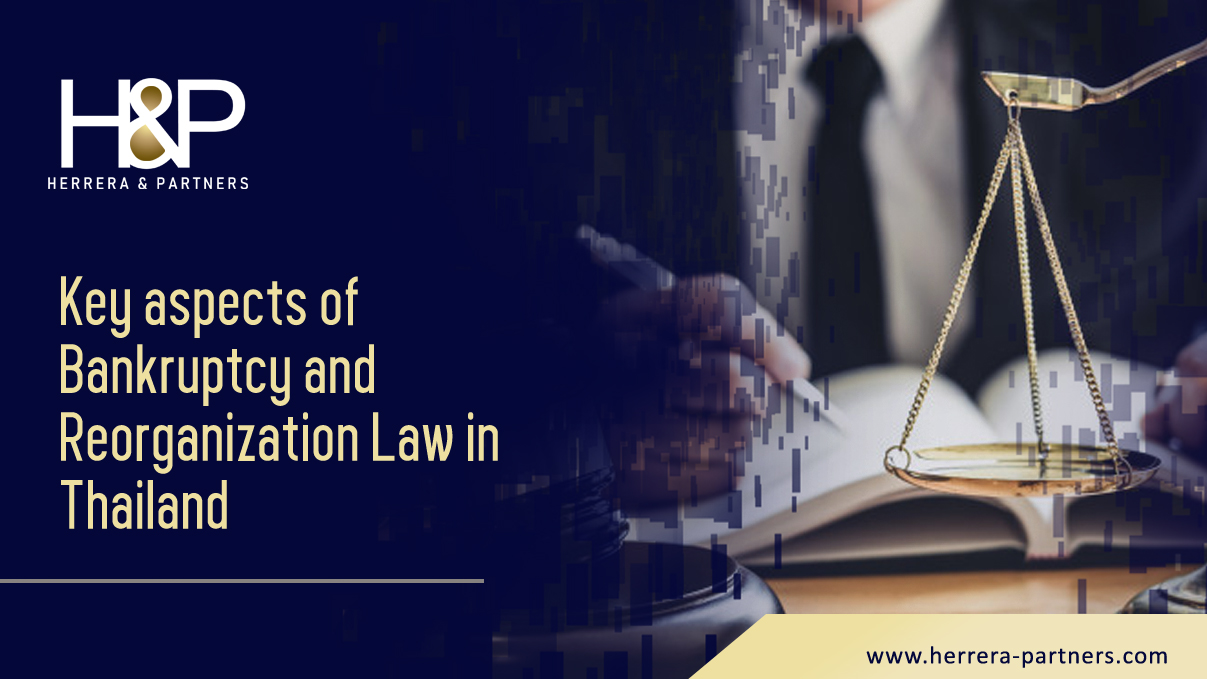
H&P lawyers in Thailand have prepared the following initial comments on the key aspects of Bankruptcy Law in Thailand and reorganization.
Who can file bankruptcy petition?
In case where the debtor is a corporation, registered partnership or limited partnership, the creditor and company’s liquidator are entitled to submit a bankruptcy petition against the debtor under the Bankruptcy Act, B.E. 2483(1940) (“BRA”). However, the conditions will vary depending on the type of petitioner.
If the petitioner is the creditor, regardless of whether the creditor is secured or ordinary creditor, it must appear to the court that the debtor becomes insolvent and indebts over 2 million THB. For liquidator, the petitioner must demonstrate that the company’s assets, including full payment of contributions and paid-up shares, are insufficient to repay the debts.
What is the procedure after submitting the bankruptcy petition?
Once the petition has been filed to the court and the above conditions has been satisfied, the court will order an absolute receivership order against the debtor. Nonetheless, the debtor may request the court to dismiss the petition if debtor can prove its ability to fully repay the debts.
Upon the receivership order, the power to control the debtor’s assets will pass to the receiver appointed by the court. For example, to manage the debtor’s property, collect or receive money from the third party, or even initiate any legal proceeding relating to the debtor’s property. The debtor cannot do anything with its property or business unless such action is in accordance with the receivership order or made upon the approval of the court, receiver, property administrator or creditors’ meeting.
After the court has receivership order, there will be the creditor meeting or negotiation process. If the creditors’ meeting pass resolution to liquidate the debtor’s business or the compromise agreement cannot be made, the court must have a bankruptcy judgement. The receiver then will take control of the debtor’s assets for distribution to the creditors.
Reorganization Petition
In order to avoid insolvency, the debtor may file a plan of reorganization, seeking the adjustment of debt such as to extend the repayment period or to reduce the debts. By this legal method, the debtor can continue normal operation of its business while undergoing a reorganization plan, leaving a period for the debtor to resolve the difficulties of its financial situation. However, the debtor is prohibited to perform any actions creating more debts or any encumbrance over its property. According to H&P experience in these kinds of cases and mostly during the pandemic, we see that many companies in Thailand are filing plans of reorganization to continue normal business activity and win time.
Apart from the voluntary petition by the debtor, the reorganize process may begin by other interested person who meets the certain requirement under section 90/4 of the BRA, such as the creditor or creditors whose debtor is indebted over 10 million THB.
If the requirement for reorganization petition is satisfied and the court accepts the petition, the debtor will be provided an automatic stay period under section 90/12 of the BRA. Upon the stay, the claims affecting to the debtor’s assets or business must be suspended. For example, the claims or actions seeking a winding up order, bankruptcy order, the execution order against the debtor’s assets. During the reorganize process, the secured creditor will, however, has less power to get repayment as the secured creditor is not allowed to process any execution upon the secured assets unless the court approval.
The petitioner is required to pay 1,000 THB court fee and 50,000 THB security deposit. The fee must be paid upon the filling under section 90/7 of the BRA.
If you need to consult a Thai lawyer on Bankruptcy law in Thailand, please contact H&P in Bangkok at [email protected]


